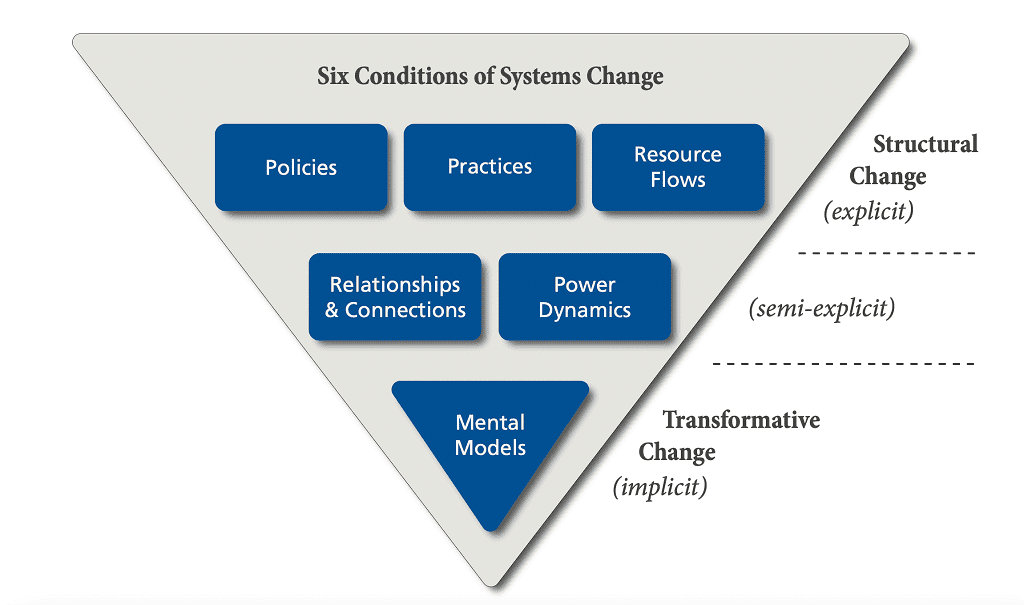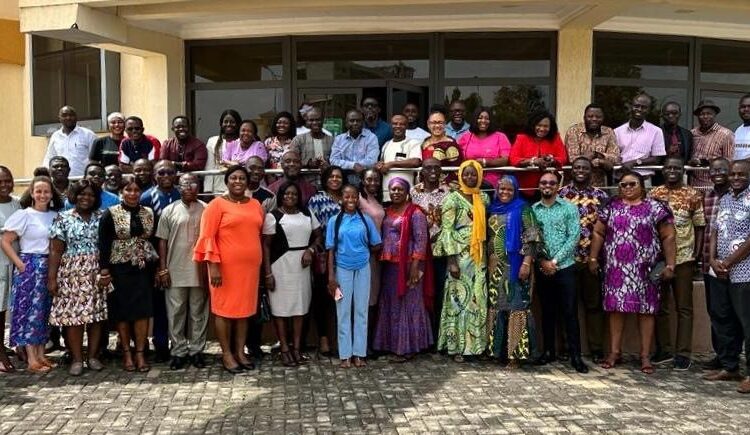“Seeing the Waters” Making Systems Change Clearer
By Laureen Adams-Tutu, PhD
Many schools aspire to achieve educational equity, which seeks to eliminate systemic barriers and ensure all students have equal access and opportunities to realize their full academic and social potential. The current education system, however, was not originally designed to ensure success for all students; rather, it was intended to categorize and maintain the existing societal order. Leaders committed to promoting equity must confront deeply ingrained systems and structures perpetuating inequities.
Consider the following analogy: “‘A fish is swimming along one day when another fish comes up and says, ‘Hey, how’s the water?’ The first fish stares back blankly at the second fish and then says, ‘What’s water?'”[1] In “The Waters of Systems Change,” the authors used this analogy to highlight how entrenched people can become in systems. They can become so conversant with the existing condition that they are unaware of being in it. Similarly, our educational systems were designed to function as they do, producing the outcomes we observe. Effective leadership involves closely examining the underlying systems, the “waters,” and determining which ones need transformation to achieve equitable results. Leading systems change is a significant indicator of effective leadership. Still, it requires leaders to identify and challenge the pervasive elements within the system, the dominant mindsets and beliefs that uphold the status quo.
Acknowledging and understanding the “waters” of our educational systems may be challenging for leaders deeply embedded in the existing structures. Nonetheless, leaders should persist in their commitment to innovation and transformation, as implementing effective systems change is possible.
Let’s examine the conditions of systems change to see the waters better. These six conditions, together, uphold systems: policies, practices, resource flows, relationships and connections, power dynamics, and mental models.
FIGURE 1. SHIFTING THE CONDITIONS THAT HOLD THE PROBLEM IN PLACE[2]
[1] Kramer, Mark R., John Kania, and Peter Senge. “The Water of Systems Change.” Report, FSG, May 2018. [2] Ibid

When leaders seek to change an outcome, like improving literacy rates in a secondary program, they must examine each condition and identify key levers to shift them. Notice that there are also three levels. Structural Change has two levels, both explicit and semi-explicit. These two levels each have interdependencies among the conditions. Often, the explicit level is where leaders begin. Leaders can shift policies, practices, and resource flows, and it will likely yield results. Those results seldom last long without addressing the other two levels. At the semi-explicit level, it is essential to note that people uphold systems. To transform a system, leaders must support transforming the relationships between people. Transformative Change operates at the implicit level. Shifting or radically changing what people believe and how they think is critical to affecting lasting systems change. Remember, these conditions work in tandem to uphold systems.
How do we shift the conditions that are holding the problem in place? Let’s take a deeper look. Leaders should consider each level of change and explore how it supports the current reality, what hinders progress, and what should shift to achieve the desired outcome. Using the example from above, let’s consider the following reflective prompts:
Structural Change:
(Explicit)
Policies: What policies are in place to support literacy? Which policies
hinder literacy?
Practices: What are teachers, leaders, parents, and students doing in school to support or hinder literacy outcomes?
Resources: How are resources being allocated to support literacy?
(Semi-explicit)
Relationships and Connections: How are teachers working with parents
and vice versa to support students’ literacy outcomes?
Power Dynamics: Who gets to weigh in on decisions around literacy
Initiatives, programs, and practices? Are all stakeholders involved?
Transformative Change:
(Implicit)
Mental models: To what extent do leaders and teachers believe that all
students can excel in literacy? To what extent do students believe they can
excel in literacy?.
The provided example aims to demonstrate the significance of each condition. As your team and stakeholders analyze each condition, they can identify the nature of the transformation needed and the key individuals who should engage in the change initiatives. While the structural change conditions play a vital role, the deep work of interrogating mental models leads to transformative change.
In conclusion, navigating the complexities of systemic change demands a holistic approach that acknowledges the interconnectedness of various conditions. A common pitfall is the belief that modifying a single condition will be a panacea, but true transformation requires a comprehensive examination of the entire system. Leaders and stakeholders must continuously reflect to achieve lasting, meaningful, and, most importantly, transformative change, recognizing that educational equity is not a solitary goal but an ongoing commitment to dismantling barriers and fostering inclusivity at every level of the education system.





